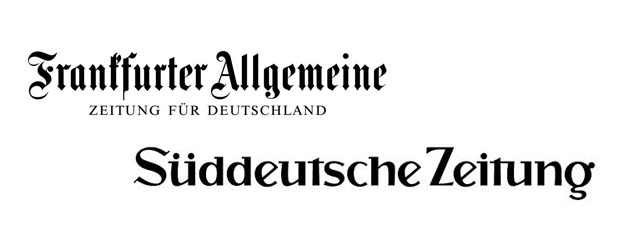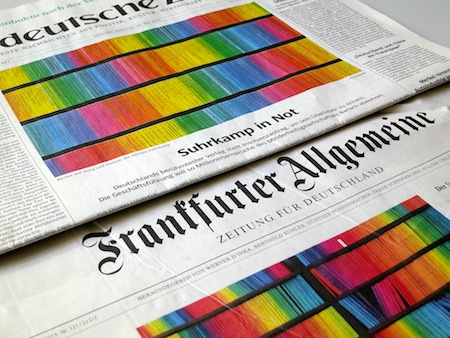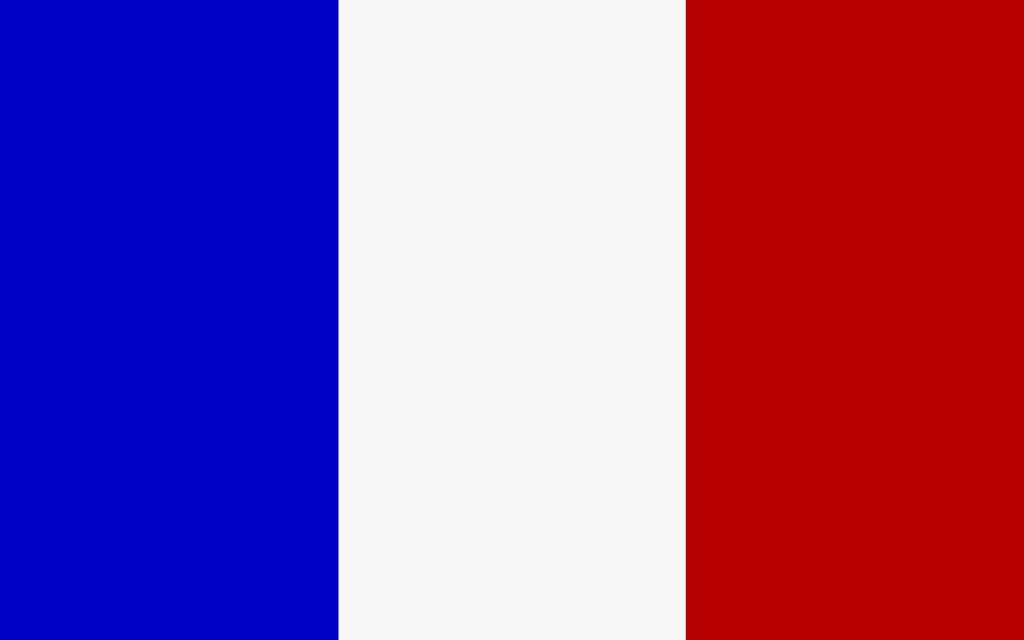And to think that for years, their alliance in the field of advertising seemed impossible…
Patrick Zanello has accepted the challenge! Each week, we’ll take a look at the main media players in Germany to deepen your knowledge before our Virtual Tour Germany. Passionate about the media, Patrick is a confirmed Swiss expert with a unique perspective on Germany and France.
Do you also want to share your expertise and knowledge? Join the international NWE community of experts!

The management of the Frankfurter Allgemeine Zeitung and the Süddeutsche Zeitung have been talking for years about an alliance in the field of advertising management. So far, however, all attempts have been in vain because FAZ Managing Director Thomas Lindner thought he could be stronger on his own than by joining forces with a partner like the SZ. In my opinion, this alliance is a good thing because it brings together two newspapers, two strong and complementary media brands.

Several factors have influenced this change in the situation, I can count at least three:
1) Germany has seen an acceleration of industrial alliances and takeovers in the media world in recent months. Ad Alliance is undoubtedly the most interesting achievement since it brings together media brands from the RTL, Gruner + Jahr and Spiegel groups under a single advertising marketing platform (TV, print, digital). Economies of scale, high-performance teams of top sales people and modern technological platforms are all assets that the FAZ or SZ do not want to do without. The development of the advertising offer is in line with the media agencies’ long-standing desire to negotiate advertising conditions with as few contacts as possible. After all, no newspaper or media brand wants to send its staff all over the country to conclude advertising agreements any more. That costs time and money! An alliance allows you to have a nationwide representation without duplication and to create joint advertising offers, or even to automate the purchase of space in the long run with common tools.
This print development strategy has now been halted in favour of a fierce desire for both actors to become digital media as influential as they have been in paper.
2) The FAZ and the SZ have long been competitors in the quality press market in Germany (with Die Zeit, Spiegel & Handelsblatt), with both titles seeking to leave their natural cocoon of Bavaria (for the SZ) and Frankfurt (for the FAZ), in order to expand throughout Germany. The paper circulation of the SZ was almost twice that of the FAZ, while failing to challenge the influence of the FAZ among the country’s elites (see Eliten 2020 study which places the FAZ in first place and the SZ in only fourth place). This print development strategy has now been halted in favour of a fierce desire for both actors to become digital media as influential as they have been in paper. And in this respect, the FAZ has an advantage over the SZ, with twice as many unique visitors per month (11.6M for the FAZ, 5.8M for the SZ). The alliance between the FAZ and the SZ will enable advertising campaigns to be quickly and easily distributed to a wider portfolio of newspaper and magazine brands – whether in digital or print form.
I am convinced that this alliance, on the advertising and therefore industrial terrain, makes sense and will enable the two newspapers to strengthen each other mutually and sustainably.
3) The FAZ belongs to a foundation that published poor results in 2018 (- €20M) and expects to close 2019 with a loss (- €10M). The Covid crisis19 will not have spared the results of the two players in 2020 and even if the Südwest Deutsche Medienholding weighs three times more than the Fazit Stiftung, owner of the FAZ (€939M in 2018 against €326M for the foundation), both want to return to a healthier situation for the future. The future will require the acceleration of digitalisation (an investment of €100M was announced last autumn by Christian Wegner, the head of the holding company, in order to be inspired by the NYT model, i.e. quality journalism paid for in both digital and print). The two players are going to intensify their collaboration over the next few months, so the “Frankfurter Allgemeine Sonntagszeitung” (very influential among German managers) could appear on Saturday instead of Sunday as the “Süddeutsche Wochenende”, in order to mutualise industrial costs between the two press groups and make substantial savings.
In conclusion, I am convinced that this alliance, on the advertising and therefore industrial terrain, makes sense and will enable the two newspapers to strengthen each other mutually and sustainably.
Links:
Eliten 2020 study: https://www.faz.media/fileadmin/07_Ueber-uns/newsroom/Markt-Media-Studien/FAZ_Elite-Panel_2020.pdf
Situation of the Foundation that owns the FAZ: https://meedia.de/2020/03/09/faz-eigentuemerin-fazit-stiftung-meldet-2018-verlust-in-zweistelliger-millionenhoehe/
Overview of the German press: https://www.deutschland.de/de/topic/wissen/ueberregionale-zeitungen
Comparative study of German cities where each of the daily newspapers FAZ and SZ is the strongest: https://meedia.de/2014/08/06/wo-verkaufen-sich-sueddeutsche-und-faz-am-besten-wo-am-schlechtesten/
Patrick Zanello
Curious about the innovations that make the press of yesterday, today and tomorrow, he has accompanied the growth of various Swiss publishers and has helped to develop advertising revenues for international media with Swiss brands. Patrick is also very active in the world of communication (Vice-President of CS Communication Switzerland). He gives us the benefit of certain nuggets from the German market through his expert eye.


